 The Pontifical Swiss Guards have been protecting the Popes and the Vatican since 1506... think about that. Over 500 years of tradition and military valor. They may seem a bit frilly to modern eyes, but underneath the traditional Renaissance garb, they are all well trained, special forces selected especially from the Swiss Army for the Vatican detail.  Tourist duty Tourist duty The Swiss Guard is also the smallest army in the world with typically only about 125 soldiers and officers serving at at a time. There are strict requirements: You must be a Swiss man, younger than 30, a minimum 5' 8" tall, be a Catholic with a high school diploma or higher. Your Swiss military service must be with good merits. You can't be married when you come into the Guard, but can marry later on. You must serve for at least two years at the Vatican. Guardsmen (no women yet) are paid a tax free salary of €1,300 per month.  Many think that Michelangelo designed their uniforms, but actually their original uniforms were slight modifications of the outfits worn by the Swiss arm at that time with the addition of the crossed keys symbol of the Vatican. The modern uniforms we see when visiting the Vatican today are actually a redesign by one of the Guard's own... Commandant Jules Repond (1910-1921). Repond studied the frescoes in the Vatican itself for the inspiration that led to the colors of the Medici (blue, red, yellow) on the Guards medieval, (and what some see as) clown-like outfits. He also introduced the fairly simple beret as the main headgear, although the metal and ostrich feathered helmet (called a morion) are still used for full dress assembly (along with white gloves). The Pierrot-like ruffled collar was morphed into a simplistic white collar. For everyday outfits, they wear a simple purple uniform which still maintains a Renaissance flair.  Although the Swiss Guard is supposed to be a rigidly trained, elite military group, Pope Francis sees it a bit differently. The Pope was angered after he saw a young Swiss guard standing outside his papal suite all night. The Pontiff told the young man to sit down for a rest, but the Guard replied that sitting was against strict orders. Apparently, the Pope replied, "I give the orders around here" and brought the guard a cappuccino. Because of this event and others he witnessed, Pope Francis fired the chief officer of the Guard, Colonel Daniel Rudolf Anrig for being "too strict" in 2014. Another deciding factor was Pope discovering that Colonel Anrig had moved into a luxurious apartment over the Swiss Guard's barracks in the Vatican.  Still, the Swiss Guard remains a tough, intensely trained army to protect the both the Pope and the treasures contained at the Vatican and St. Peter's Basilica. There are the Guard that are apparent to all visitors, with their colorful dress, but there are also members with more stealthy duties akin to the U.S. Secret Service. Whenever you see the Pope in public, they surround him looking away from the Pontiff into the crowd. They all are packing some pretty serious heat: fully automatic and compact Sig 552 machine guns are hidden under their jackets. But don't write off the soldiers on public duty... they receive specialized training with their Renaissance-age weapons, and are very cable of using their 9-foot long steel pike to stop an attacker or terrorist. There is also a arsenal of weapons, both modern and old, that the soldiers train with constantly with. Of course, handguns are used... notably the SIG P220 pistol. Besides the Swiss Guard, the Pope and Vatican City itself is protected by the 200 year old Gendarmeria Corpo della Città del Vaticano (Gendarmerie Corps of Vatican City State)--its own uniformed police force. They are on duty in St. Peter's Square, direct traffic (both pedestrian and vehicular), and investigate crime within the Vatican City boundaries. Essentially, they are the State Police of Vatican City. They are even trained in counter-terrorism, explosive ordinance disposal and anti-sabotage techniques. In addition to all this, there is an infrastructure to go along with all of the Papal protection, led by the Inspector General of the Vatican. It's the Inspector General that leads security teams when the Pope has a state visit somewhere in the world.
As you can see, Pope Francis, and all that is contained in Vatican City are well protected... well proven by the 3 hour long lines trying to get into St. Peters Basilica! So, when visiting the Vatican, take all the photos of the Swiss Guard that you like... just remember, they are not clowns... they are real, workaday soldiers dedicated to their task-- to protect the Pontiff. --Jerry Finzi You can also follow Grand Voyage Italy on: Google+ StumbleUpon Tumblr
0 Comments
 Rome has lots of graffiti. Tons of it. Way too much of it. Well, now, someone is going to be power-washing a bit of it.... a tiny bit... around stenciled, shadowy images formed by the grime and graffiti left behind. South African artist, William Kentridge (Huh? Not an Italian?) is going to power-wash his 1800 foot work of art onto the walls of the Tiber River in Rome. The frieze will stretch from Ponte Sisto and Ponte Mazzini. His work involves placing stencils onto the filthy, graffitied stone walls and power-washing the stone around the stencils--the stencils will be removed, revealing a ghostly silhouette of each image underneath. His concept (he dubbed Reverse Graffiti) is that the imagery will eventually become dirty and covered with graffiti over time and blend back into the ancient stone walls which prevent the Tiber from flooding over its banks. The project entitled Triumphs and Laments, is sponsored by Tevereterno, an organization working to clean up and revitalize the Rome river walk.
Even though Kentridge isn't a Roman, his work smacks one in the face with his gritty style and images of pain, valor, bravery, banality, joy, war and religion--all part of Rome's history and contradictions. If you want to see the work, it will be revealed on Rome’s 2,769th birthday on April 21st. I hope they have enough candles for the cake! Ciao! --Jerry Finzi You can also follow Grand Voyage Italy on: Google+ StumbleUpon Tumblr Before I got to Italy I did research about driving on Italian roads. I figured it wouldn't be all that different from here in the States and I did fine in France years ago, so no big deal. Many signs are very understandable, but some are unique to Italy or need some explanation. Don't stop reading until you see the STOP sign... The sign at the left is a YIELD sign. It's shaped just like ours but never has words on it. Of course, Italians ignore this sign completely. They just sort of roll into traffic and the traffic is expected to brake and let the car into the traffic flow. This is fact. This is how it works everywhere in Italy (even more so around Naples and other big cities). The drivers on the main road or street are the ones expected to do the YIELDing. The other signs might be confused with yield signs, and they are really are more like MERGE, except they are used for all sorts of intersections too. Just remember that the other the Italian drivers behind you will hug your bumper expecting you to just roll right into the intersection and the other drivers will YIELD and MERGE for you. If you "wait for your turn" the cars behind will simply pass around you. Need more convincing? Watch the video below: OK, now the signs above DO matter. I found out the hard way on the narrow road I took up to the town of Fiesole above Florence when cars coming down the hill acted like they expected ME to back up and let them go. I got a little hot because it seemed that all the cars coming down the hill toward me were driving overly fast, and then cursed me when we were suddenly in a door handle-to-door handle situation, nearly scraping each others' cars. It's because I failed to see or understand the sign at the right (red arrow right side) on the way up the hill. That sign meant that oncoming traffic had the right of way. The big red circle should have been a giveaway--red for STOP. A red arrow on the left means that oncoming traffic has to stop and let you go. Oncoming cars would be expected to pull over or even back up. I had to back up several times. You often see these signs on narrow roads and ones with tight, blind curves (like this one), although I don't recall ever seeing them on the Amalfi Coast road.  This sign means no passing allowed. The red car on the left means no passing for you. Red on the right would mean you can pass. Sounds backwards a bit. Just think of it this way: If you ARE allowed in the passing lane (to your left) then the car on the left side of the car would be black on the sign. Of course, Italians pay little attention to these also. They pass wherever they want to. No Standing - No Parking 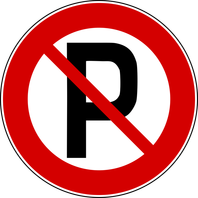 The two signs pictured on the above are extremely important for foreign drivers. The sign on the left (red circle and X over blue field) means NO STOPPING OR STANDING, the same as the NO STANDING ANY TIME signs we have in the States. In other words, even if you are just dropping something off at the Post don't do it--don't stop--even if you see locals doing it. They may have special permits.The sign pictured to its right means NO PARKING.... ever. You will normally see these signs on very narrow streets, especially as they pass through an urban town.
No Man's Land: the Dreaded ZTL 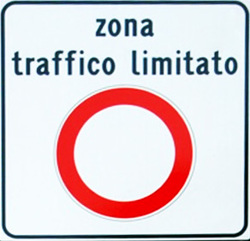 This sign is perhaps the most important one you will come across. Any sign with a red circle surrounding a white field is the basic symbol for NO CARS ALLOWED and is used to mark Zona Traffico Limitato (ZTL) areas. These are areas where you cannot drive into for fear of getting an expensive summons sent automatically to you back in the U.S. Most towns and villages have ZTLs. They are camera controlled. You will never see a policeman. You need to realize that there are all sorts of qualifying times and restrictions along with some ZTL signs. Before you go to Italy, take the time to look at ZTL signs, read websites that talk about the ZTL and even put the language on the signs into Google Translate to learn how they restrict the ZTLs. There are many that you are allowed to go through IF you are doing so during the permitted hours of the day, or permitted day of the week. (For instance, small towns might have ZTLs only active on one market day each week). The sign shown on the right basically means NO ENTRY. You will see these on one way streets, some dead ends and other streets that for whatever reason you are not permitted to drive into. Watch That Speed Limit!  Speed limit signs might be colored with a red circle or plain black and white or even blue. They might be square or rectangular. You have to keep in mind that Italy doesn't really function as one country with each province obeying the same standards and laws. Each region of Italy has separate deals with the national government, some are more independent than others and many set their own regulations. So, if you see a number on the side of a road that looks like a speed limit, it most likely is, even though the sign might look a bit different than in other areas you've traveled through. This one (photo right) is pretty typical for most areas. Be aware of the difference between MPH and KPH. A posted 50 KPH means the limit is around 31 MPH. You'll see this going through local towns (or even slower). On the autostrada you will typically see 90 (55 MPH) or 120 (68 MPH). We set our TomTom (we called him Tommy) GPS to MPH and the rental car's speedometer was set to KPH, a good method to gauge your speed and learn what local speed limits translate to in terms of MPH, along with the feel of your speed on the road. Do NOT follow the speed of local drivers! They know where the cameras and speed traps are, or might be leaving the upcoming speed zone before the end of the averaging zone. You see, many speed zones sensors average your speed going through the entire zone and only take a picture of your license plate/tag number just after you leave the last part of the averaged speed zone. Many towns in Italy have such zones as a large regional road passes through their main street. Be careful and don't speed up, even if a local road hog is driving on your rear bumper.  There is also this sign (at the right). The END SPEED ZONE sign. You will see this sign coming out of towns to let you know you can speed up again. Step on the gas, drive safely and enjoy the road ahead, that is, until you see the sign that we all recognize... The STOP sign. Unless you are Italian, of course... Then you simply ignore it. --Jerry Finzi Update 3/31/16: One of my Facebook amici offered an amusing way to remember the two basic types of signs in Italy: "I triangoli sono di pericolo, I rotondi sono di divieto" The triangles are of danger, the buttocks are of prohibition --Francesco Catalano Copyright, 2016 - Jerry Finzi, Grand Voyage Italy - All Rights Reserved
When I was a young boy we would drive down to Hoboken (Click to read about our visit to a Hoboken Festival) to visit my Uncle Sal and Aunt Antionette in their red brick row house. The part I loved best was their lower floor... I suppose you could call it a basement, but it was really like a finished apartment, even though there were large, silver-painted heating pipes running along the ceiling, with Nonna Finzi sitting quietly in the lower front parlor as the loud chaos of our Italian families cooked, played and teased each other. When it was warm out, the men would play and gamble and argue in the bocce court behind their vegetable garden. But most of all, I remember the kitchen down there... white subway tile running all the way up to meet the ceiling... and the big pots... and those great smells. It seems that just about every time I visited, there was a huge pot of Sunday Gravy on the stove top simmering and letting its rich smells escape through the place and into my nostrils. There seemed to be an endless supply of meatballs (polpette), sausages and brasciole. Then at Easter time there was a real treat: Pizzagaina. In our family, that's what we called it. PizzaGAINA, pronounced PEETS-a-GAYN-a. But depending on what part of Italy your family comes from, and the dialect spoken, you might hear it called any of the following: Pizzachiena, Pizza Chena, or even Pizza Rustica. A rough translation in all cases is "full Pie" with the latter being "rustic pie". Pizza Cena would mean "dinner pie". There is also another version called Pizza Ripiena that is thinner and more of a double stuffed crust pizza, and definitely not as thick as the Pizzagaina "full" pies. Never thought about it before, but maybe they are called "full" because that's how they'll make you feel. It’s usually made before Easter on Good Friday and eaten on Easter Sunday as a celebratory meat pie to break the Lenten fast. After having given up all red meats during Lent, this dish is really going off the wagon because it contains lots of different meats and cheeses. An Easter feast might also have meat in other courses, too. You can imagine in times past how a spring lamb or pig were slaughtered or even a cinghiale (wild boar) was hunted and butchered in preparation for the Easter festa--a big deal after a lean winter and Lent. Usually, a hour or two before they put out the pasta, sausages, brasciole and meatballs, my Aunt Anne would put out a tray of mixed antipasti along with the Pizzagaina for slicing. While I loved picking on a few olives, some chunks of provolone and salami, the real prize was getting a nice wedge of pizzagaina. Often it was still warm with its thick, eggy, meaty filling of salty ham, salami, chunks of hard boiled eggs and other things I couldn't identify as a kid (more than likely mortadella or capicola). There are two ways to make this Easter pie--one using thin, layered slices of cold cut meats, with the other using diced pieces of meat and sausage. The base of the filling is made with egg and cheese, something similar to a French quiche (but to my taste, far less greasy). Pretty much every family will have it's own version. My Dad would call this type of recipe baBUCcia (sp?), a Molfetese dialect word he used to mean "all mixed up together". While the ingredients might be similar, everyone makes it differently, and the recipe might change from region to region, perhaps a frugal habit of using up what meats were left over by the time the long winter reached Easter. Some make it looking very much like a proper meat pie in a pie pan, while most use a high sided spring form pan. Still others might make a large one in a lasagna pan, with far too many eggs (in my opinion), and cutting squares to feed a large family gathering. On Easter Sunday this year, Lucas and I set out to make our own version of this classic holiday pie... Let us know how yours turned out! Babbo Finzi's Pizzagaina For the Dough 1 pound flour (to ensure a good crust, it's best to weigh the flour) 2 eggs 1/2 teaspoon salt 2 sticks cold butter (1/2 lb), cut into small pieces 1/4 cup whole or skim milk, plus a little more if needed at the end 1 beaten egg with a pinch of salt to brush the crust For the Filling 32 ounces ricotta cheese (well drained, preferably the night before) 1 dash nutmeg 25 cracks black pepper 2 large eggs 1 cup sharp provolone, 1/2" dice 1 cup Fontina, 1/2" dice 1 cup smoked mozzarella, 1/2" dice 1/2 cup Parmigiano-Reggiano or caciocavallo, grated 1/4 pound Boars Head Piccolo Prosciutto or Speck, sliced 1/8" thick 1/4 pound Boars Head Pickle Pepper or capicola, sliced 1/8" thick 1/4 pound Boars Head Crushed Peppermill Turkey, sliced 1/8" thick (NOTE: You can substitute 3/4 pounds of 3-4 of your favorite meats for the above... chicken, pork, ham, boar, sweet or spicy sausage broken up, etc.) 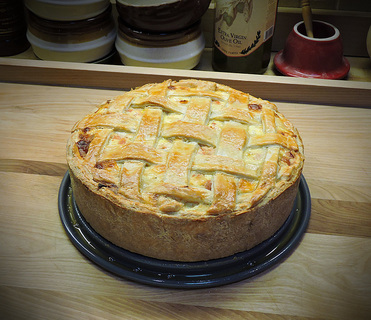 Making the Dough for the Crust In either a stand mixer with a dough hook, or a food processor with a blade, add all the flour and salt and mix a bit before adding the small pieces of butter. If using a stand mixer, you can mix on medium--if using a food processor, pulse until the mixture starts coming together, but don't over process or your crust won't be flaky. Drizzle in the 1/4 cup milk and the 2 eggs (You can beat them before adding it you wish). This should make a dough ball form as you continue to mix/pulse. If the ball doesn't quite form, drizzle in a little bit more milk, but stop when a ball forms, then turn it out onto a work surface lightly dusted with flour. With your hands (but without kneading), press your dough into a large ball at first, then flatten it into a thick disk and wrap in plastic wrap and set aside to rest at room temperature. Do not over mix or knead your dough or it will be dense and loose its flakiness. Making the Filling
Putting Together the Pizzagaina
You can get 8 or 9 decent sized slices out of this pie. Serve as an robust antipasto or have a slice with a salad on the side for a lunch or light supper. You can also serve a slice with a dollop of marinara on the side. There you have it, our Pizzagaina recipe... enjoy... Boun appetito e Bouna Pasqua! (Click HERE to see our Double-Crust, Pizza Rustica recipe) --Jerry Finzi
Mother Mary Angelica of the Annunciation, a Franciscan nun (born Rita Antoinette Rizzo on April 20, 1923) passed away on Easter Sunday, March 27... a befitting day for the TV personality and founder of the broadcast cable television network Eternal Word Television Network (EWTN).
Mother Angelica began broadcasting religious programs from a garage TV studio in 1981 out of Birmingham, Alabama. Over the next twenty years, she developed a media network that included radio, TV, and internet channels as well as printed media. She hosted shows herself until her stroke in 2001 and then went to live in a cloistered monastery in Hanceville until her death at age 92 on March 27, 2016, Easter Sunday. Here is a photo of the Pane di Pasqua I baked this year for Easter. We just had it this morning with fried eggs, Italian Mille Fiori honey and blueberry jam. Delizioso!
BTW, the eggs in the bread were raw when I baked the bread and they turned out slightly under the "hard" state--still very good. I topped the breads (I made two) off with chopped almonds and turbinado sugar. If you didn't get a chance to read it, here's a link to my blog article: Italian Easter Bread: Pane di Pasqua Recipe  Easter celebration breads are made throughout Italy... Pane di Pasqua. To celebrate Easter in Sicily, they make "baby-doll" breads for girls, and breads shaped like ducks, lambs and horses for boys. In most areas of Italy, there are Easter breads and mostly are sweet and contain whole, brightly dyed eggs which are braided into the bread, with the eggs cooking during the baking. In Lombardy there is the Colomba Pasquale (literally "Easter dove"), which has become popular throughout Italy. In Sardinia, the celebration breads get even more intricate, with scissor work on the dough adding amazing details in Easter egg baskets. The eggs can be brightly colored or natural. In the Greek tradition, the same sort of bread is made with eggs dyed red by using onion skins. The eggs represent birth, or rather, at Easter the re-birth. I've made my Easter Egg Braided Bread several times over the years for my family... I thought I'd share the recipe: This recipe can make one round bread or two smaller straight braided breads, or 6 individual breads. Dying the eggs: First of all, dye 4-6 eggs, but do them while they are raw. The baking will cook them to a hard boiled state. If you want to make real looking like partridge eggs, dye them a pale blue and then use a tooth brush with brown dye to put blotches and spots all over each egg. Proofing Yeast: 1 tablespoon instant or active dry yeast. 1/3 cup milk (at 115 F) 1 tablespoon sugar
Making the dough: 2 1/2 - 3 cups all-purpose flour (depends on humidity... don't put in all the flour if it doesn't need it, but if it's a rainy day or you're using jumbo eggs, you might need 4 cups). 1/2 cup warm milk (115 F) 1/4 cup orange juice (room temperature) 1/2 cup sugar 1 teaspoon salt 8 tablespoons butter (softened & cut into small pieces) 3 eggs well beaten (You can substitute Egg Beaters if you like). 1 teaspoon vanilla (or almond flavoring for a more Italian flavor) For egg wash: 2 eggs beaten (egg wash for brushing)
Forming the Bread:
Buona Pasqua! --Jerry Finzi You can also follow Grand Voyage Italy on: Google+ StumbleUpon Tumblr Article and recipe copyright 2016 - Jerry Finzi/Grand Voyage Italy - All rights reserved
 from Olive Oil Times, March 17, 2016 Deoleo, the world’s largest olive oil company, has initiated a voluntary recall of Bertolli Extra Virgin Olive Oil (8.5 oz.) and Carapelli Extra Virgin Olive Oil, (25.5 oz.), sold in glass bottles in 20 U.S. states, according to the U.S. Food and Drug Administration Recall Information database. The products are being recalled due to the detection of trace amounts of Trifloxystrobin and Tebuconazole — two pesticides that the U.S. does not allow in any amount in olive oil. Both of the chemicals are classified as “not likely human carcinogens.” Last November, Deoleo USA issued a voluntary recall withdrawing some of its Bertolli and Carapelli Extra Light Tasting and Bertolli Classico Pure Olive Oil because the products may have prematurely spoiled, according to notices sent to several major retailers. “Our investigation to date reveals that the oil has prematurely oxidized, causing potential off odor and taste, which presents a quality but not a health issue,” the company said at the time. “We have identified the source of the problem with one of our refining suppliers and have taken immediate corrective action.” In another development, the U.S. distributor for Bertolli and Filippo Berio olive oils, attacked the credibility of the lead plaintiff in a class-action lawsuit against the importer. According to Law360, Salov North America Corp. said in an opposition to Rohini Kumar’s class certification motion that there was no evidence to support Kumar’s claim that she interpreted “Imported from Italy” to mean the oil was only made with Italian olives. Salov also pointed out that Kumar had been convicted as a felon which, the company argued, cast further doubt on her credibility as a lead witness. Hold on now. When we Italian-Americans were all busy with our St. Patrick's Day celebrations (with us, it was shepherd's pie, Irish soda bread and some Harp lager), we overlooked a fairly new holiday for Italians... In 2011, in honor of the 150th Anniversary of Italy's Unification (and at long last) the Italian government approved a national holiday to celebrate the joining of the regions and kingdoms of Italy into one Nation. Italy became a nation on March 17, 1861, most regions and the Kingdom of Two Sicilies were united under king Victor Emmanuel II (formerly king of Sardinia). Giuseppe Garibaldi overthrew the Kingdom of Naples to get the ball rolling toward one, united Italy. The odd thing is, that before the creation of Giorno Unificazione (Unification Day), not many Italians gave much thought to March 17th. It was just a day like any other. Perhaps the reason is because there isn't much national identity in Italy. Look at the vintage cartoon above... That's Garibaldi trying to stuff Victor Emmanuel's foot into the boot of Italy--a tight fit indeed for the many varied cultures living in Italy at the time. One's regional identity matters more to most Italians. They are Sicilian or Venetian or Calabrese or Tuscan before they are "Italian". One might even argue that the Euro zone has watered down the Italian identity even further... no more pride-inspiring Lire notes with the likenesses of Marco Polo, Raphaello, Marconi or Verdi... Euro notes are homogenized. And today everyone carries the same Euro-style passport as every other Euro country. There are reasons for this regional independence. Trentino-Alto Adige (originally South Tyrol) was taken from Mother Austria and given to Italy, even though most who live there there speak German, and eat schnitzel and might drink beer more than wine. People in Friuli-Venezia Giulia have their ethnic roots in Slovenian, while people in the north-west regions, like Piedmont have cultural similarities to the French. In Sicily, the diet and architecture is more Arab and Moorish than Italian, and the people of Puglia still show their Greek influences. Then there are the languages. Italy doesn't speak one national language. There are over 200 recognized dialects spoken in Italy besides Italian. In truth, there are really thousands. (Read about them HERE.) You might be on a train and hear announcements in Italian and one or two local dialects. Someone from Rome might not understand a Calabrese speaking in their native tongue. Even my Napolitano mother couldn't understand when my father spoke his Molfetese dialect. No wonder they brought us up speaking only English. Today, they are starting to care, if only because it is a guaranteed day off--with pay. In fact, the only way the government could get the holiday's approval was to take away another holiday (Armed Forces/Liberation Day on November 4) to make way for the new one. They wouldn't give the workers yet another day off, so it all balanced out in the end. So, if you have any national pride in one Italy, give a toast for Unification Day... and all stand for the Italian National Anthem in the video... As a young Catholic, all I knew about St. Joseph is what the nuns taught us: that he was a foster parent to Jesus; he worked as a carpenter; and that if your parents were selling their home, burying a little statue of him upside down in your garden would help get a buyer. As a grown man and a father to my Lucas, I realize that St. Joseph's real strength was as a father... He must have been a man of great faith and trust and love to accept Jesus as his own son. 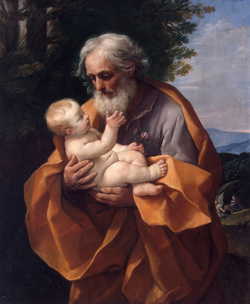 St. Joseph with his new son St. Joseph with his new son La Festa di San Giuseppe (Feast of St. Joseph) on March 19th in Italy is a saint day celebrating the mortal father of Jesus--namely, Joseph. There are two meanings for this day in Italy: as a Name Day to celebrate anyone with the name Giuseppe, Joseph, Josephine or Beppe, but also as La Festa del Papà (alternately, la Festa del Babbo), on which most Italians celebrate their fathers, as we do on Fathers Day. There are some interesting ways to celebrate, but of course, most involve food. For instance, artichokes come to market in March in Italy, so eating artichokes stuffed with a breadcrumb mixture is one way... the breadcrumbs represent sawdust, honoring St. Joseph's life as a carpenter. On St. Joseph's day, tradition calls for sprinkling breadcrumbs on pasta dishes rather than cheese. Then there is Pane di San Giuseppe in which bread dough is fashioned into crosses and other various shapes. Another cerebration dish to make to celebrate St. Joseph or your Dad (my father would have loved this) is to make Pasta cod Sarde (Pasta with Sardines), a traditional meal made with bucatini (hollow, spaghetti-like pasta), raisins, pignoli nuts, fennel, onions and sardines. Then there are the sweet treats... mainly sfinci (alt, sfinge). Some are made like profiteroles or cream puffs and stuffed or topped with either a custard or a sweet ricotta filling and topped with a sour cherry, while others are more like bready, sugared zeppole, some stuffed, some not. There are also others called Zeppole di San Giuseppe that are not bready like what we Italian-Americans buy at Italian festivals called zeppole but are like cream puffs. Bottom line, there are lots of sweets that are made to celebrate St. Joseph's Day, and in Italy, the word "zeppole" is used fairly broadly to refer to many types of fried or baked donuts. In Sicily, during the Middle Ages, people prayed to St. Joseph to bring rain and save them from starvation and drought. The rains came and so did the fava bean crop, which saved the people. Still today, fava beans are part of celebrating St. Joseph--by eating Maccu (a fava bean soup) and carrying a fava bean that has been blessed by a priest in their pocket for good fortune. In the United States, a tradition of wearing red clothing was started to offset the proximity of St. Patrick's Day on which people wear green. Apparently, there is no religious or other significance of wearing red on St. Joseph's Day. On Saturday night for St. Joseph's Day, and to honor my Dad I made a special pizza--a traditional Sfincione which was covered with breadcrumbs on top. My Dad was not a great carpenter, but always loved working with wood and his hands. When I was a boy, he held the wood as I would try using the saw. He was a truly great father, never judging, always there for me. Dad, you would have loved a couple of slices of Sfincione... We miss your smile, Sally Boy...
The first time anyone travels to Italy, there are always a list of "must sees" that they try to squeeze into the limited time of their voyage. Especially when you're traveling as a family, you try to satisfy everyone's goals and dreams. But there are some things that might be missed due the to tight time constraints of checking in, checking out, train schedules, car rental pickups and drop offs, ad infinitum. So I came up with an idea for a second trip to Italy where one doesn't have to do any "must sees" and try to experience even more of day to day life in Italy. This idea is based on something we totally missed out on during our intensive three weeks Voyaging through Italy--markets. Markets in Italian towns are on very specific days and times. Usually they start early in the morning (especially true for food markets) and often close early. Flea Markets might only be held once a week or month. Authentic antiques markets might be held even less than that--perhaps once a month or season. We missed market days either because we were in the wrong place, or in the right town on the wrong day. We missed early morning markets because of tight schedules for check out and check in times, and time spent driving from one location to the next. The next time around, we're determined to slow it down a lot, pick fewer "hub" places to stay so we can live the Italian life at a slower pace--while experiencing the wonderful markets. Here's the plan... Forget tourist hot spots and "must sees" and shop where the locals shop for food (planning lots of picnics and cooking back at your apartment's kitchen). Plan your agenda on where you will buy food, fish, clothes or antiques. Book an apartment in a central hub location so that you can journey out to this town and that on market days.... hunting for the best cheese, fruit, sausages, leather bags, hand crafted fabrics, lace and more. Find a genuine antique to bring back home. So, decide on what markets you'd like to experience, book a flight and an apartment and gas up that rental car... Here are some options of various types of markets all over Italy... Enjoy your shopping! Naviglio Grande Canal Antiquties Market, Milano In Milan, you can enjoy a fantastic antiques market right on the banks of the Naviglio Grande Canal. Stalls offer furniture, porcelain, books, jewelry, paintings and prints and spans nearly a mile from Viale Gorizia to the bridge on Via Valenza. The market is open on the last Sunday of each month with many bars, shops, restaurants and numerous art galleries in addition to the vendors. Piazza dei Ciompi Flea Market, Florence Open daily from 9am to 7pm this is considered Florence's best flea market. It really gets busy on the last Sunday of the month its 100 extra stalls also overflow into the streets around. There's the usual eclectic mix that makes flea market shopping so addictive! Campo dei Fiori Market, Rome Campo dei Fiori translates as Field of Flowers, and in fact, there is a large contingent of vendors that sell wonderful flowers here. But primarily, this is a food market. It's a stunning piazza in the heart of Rome not far from the Pantheon with a gruesome past--public executions were held here. Though filled with tourists in the high season, the market is also frequented by locals. By night, it transforms into a great place to have dinner in one of its many outdoor ristoranti. And if you're staying in Rome, you can walk to this and many other types of markets... and not have to pay for gas.  Mercato Nuovo, Florence The Mercata Nuovo was named the "New" market when it was built, around the middle of the 16th century in the heart of the city, just a few steps from the Ponte Vecchio. Initially, it was intended for the sale of silk and luxury goods and then for the famous straw hats, but today mainly leather goods and souvenirs are sold. In the corner niches, statues of famous Florentines were installed during the 18 century. The focal point of the loggia is the Fontana del Porcellino--fountain of the piglet. What you see is actually a copy of the original bronze wild boar by Pietro Tacca from the sixteenth century marble. The original marble of the Porcellino can be found at Palazzo Pitti. Popular tradition has it that rubbing the nose brings fortune, so over time, the piggy's nose has developed quite a polish. Visitors are encouraged to place a coin in the mouth of the boar after rubbing its nose, and superstition implies that the wish will be granted if the offering tumbles through the grate where the water flows. The slope of the grate is such that most coins do fall through, and are collected by the city. Lungo il Tevere festival, Rome Not exactly a market, per se, but in the summer, the Lungo il Tevere festival runs from mid-June through the end of August and features vendors, restaurants, music, and bars in festive tents lining the river walk on the Trastevere side of the river. It’s the place to be, often until the wee hours of the morning. Porta Portese, Rome In the work-a-day Trastevere neighborhood, this is probably the most famous flea market in Rome It stretches from Piazzale Portuense to Viale Trestevere and is held on Sundays from 6.30am to 2pm. Bargaining will get you anything from 10 to 30 % off, so give it a go. You'll find everything here, including a lot of junk, but keep your eyes peeled and you may come home with a treasure. Mercato Orientale, Genoa At the Mercato Orientale (Eastern Market) of Genoa you can find everything from tripe to baked goods and fresh pasta, plus textiles, fruits, vegetables, household goods and footwear. It is a true gathering place, crowded by the locals, where they purchase traditional products, local foods, and specialties from different cultures.A visit here is an authentic experience and not to be missed if you are into local color color, flavors and scents. Molfetta Fish Market, Molfetta (Bari) When you visit an old world palatial fish market building like the one just off the harbor in the port town of Molfetta, you realize that we Americans are very fussy in our fish preferences. While the average U.S. supermarket has perhaps 4-6 types of fish, some shrimp and clams, Italians enjoy a much wider variety of sea food. We like to buy our fish in little plastic trays, trimmed and cleaned for us by someone we might not ever see. This market is a lively place--and not just the shouting fish vendors--but the fish themselves... the marble display slabs are brimming with fish so fresh that most are still alive and flapping about, shrimp's tentacles feel about, sea urchin's spines move and octopus try to crawl away. If you can get past the magnificent smell of the place (our boy Lucas objected), this is an experience you won't want to miss. (Read A Blessing in Molfetta's Waters) La Vucciria Market, Palermo La Vucciria is a Palermo's colorful, exotic market . If you leave Piazza Marina with the sea behind you you'll reach Corso Vittorio Emanuele, just before Via Maqueda on the right you should see, hear and smell the market. The colors, flavors and voices of Palermo come together and vendors will try strongly to entice you to buy their offerings, from freshly caught fish to unusual vegetables and amazing spices. Food stalls sell an array of sandwiches--panelle, chickpea fritters, aubergines, octopus - you name it. There are places to sit and have a meal too... and as you sit overlooking the market you'll think you're in the middle of Shanghai or Casablanca instead of Sicily. Porta Palazzo, Turino This market is held every day in Piazza della Repubblica in Turin, very close to the Porte Palatine and the Duomo. If you want to fully enjoy the market of Porta Palazzo, Saturday is the day to go--the busiest day, but also because every Saturday just behind the market there is a flea market, where you could find old records, antiques, postcards, vintage clothing, glassware, ceramics and more. The main market is very mixed: fruit and vegetables, household goods, butchers, fish, cheese, sausage, shoes, clothing and spices. This market is huge (one of Europe's largest), but it's also one of the more multi-ethnic markets affording more exotic offerings in addition to the more traditional Italian produce. Piazza del Ferrarese, Bari (Puglia) Piazza del Ferrarese, named after a Ferrara merchant who lived here in the 17th century, provides an elegant entrance to the old town. On your left are the rounded arches of Sala Murat which holds contemporary art exhibitions, and on your right is the old indoor fish market. The piazza is lined with bars and cafés, an old section of roman road roped off in the middle. On certain days there are food vendors under tents. To the north it merges into Piazza Mercantile. But for the authentic experience, walk a block or so south along the waterfront and you'll come across the waterside fish market where the daily catch is sold directly from the fishermen. You'll see a covered structure with concrete tables where the fishermen are supposed to sell their wares, but being furbo, most avoid the fees the city charges for this and sell their catch along the sidewalk just outside the structure. Piazza Campo del Palio, Asti This is Piedmont's largest food market held in the Piazza Campo del Palio in Asti. The Campo is also where horse races are held in September. This market is considered a general market with varied products being sold. It is open twice weekly on Wednesdays & Saturdays... clothing, shoes, haberdashery, hardware’s, household items, cheese, meat and bakery stands--and of course, the famous sparking Asti Spumonte wine. Fruit and vegetables in the morning only. You might think about planning a trip in September and take in the Palio race too! Ballarò Market, Palermo This is the market where you will find a lot of locals doing their shopping. A Sicilian street market is a cacophony of sights, sounds and scents. Be prepared for the shouting, barking and singing of the vendors pushing their products on you--fruits, vegetables, fish and meats--which can intimidate the uninitiated. The name probably comes from Balhara village, where there were Arab merchants. There is a strong Arabian influence in Sicily. The ambience is heightened by colored tarpaulins suspended as tents to protect the wares from the elements. Ballarò market extends from Piazza Ballarò in the Albergheria district toward the main train station. Forte Dei Marmi Antique Market, Lucca (Region) Every second Saturday and Sunday of the month, more than 45 traders from all over Italy travel to Piazza Dante, Forte Dei Marmi to be a part of the monthly antique market. The best of Italy’s antique collectors are the ones who take part in the market. Sculptures, art, collectibles, jewelry, furniture, books and artifacts are some of the items that are available on sale at bargain prices in this market. If antiques are your thing, this is a must visit place for you. In the end, you'll love Lucca as a place to visit. It became one of our favorite towns in all of Italy, and our most favorite in the North. Forte Dei Marmi Flea Market, Lucca (Region) Aside from being a busy beach town in the Lucca province, Forte Dei Marmi is a shopper’s paradise. The Forte Dei Marmi flea market opens every Wednesday from 8.00 to 14.30 at Piazza Macroni near the city center. Traders from all over Italy come over to display their wares. Everything under the sun, from crockery to branded designer wear, is available at this flea market for bargain prices. During summers when the tourist inflow increases, this market is open even on Sunday’s. This is the perfect place to shop, as you get the best of Italy. Mercato di Mezzo, Bologna The Quadrilatero area of Bologna has a long history of trade guilds since the Middle Ages. The main craft guilds of the city such as goldsmiths, butchers, fishermen, furriers, barbers and the painters, and Salaroli (specialists who salt cure meat) had their headquarters in this area. Most of the guilds located in the street once called Mercato di Mezzo, today known as via Rizzoli, at the beginning of the 20th century also moved in the heart of the Quadrilatero. Nowadays the Quadrilatero is the historical center area bounded by Piazza Maggiore, via Rizzoli, Piazza della Mercanzia, via Castiglione, via Farini, Piazza Galvani and Via dell’Archiginnasio. Jewelers, butchers, delicatessens, greengrocer’s, bakeries, shops with traditional cuisine and craft activities and other specialized trades are located in these streets. Most of these shops have preserved the historic architecture and furnishings, thus making themselves genuine artistic treasures. From the elegant Piazza Maggiore, the roads lead to the narrow alleys of the old medieval market overflowing with goods on the stands and full of noisy sellers and customers going by. Porta Nolana Fish Market, Naples Just a few blocks north of the port in the area around Piazza Nolana, under two towers of the old Aragonese gateway that stood guard over the ancient port entrance to the city, you’ll find Naples' best seafood market. And if you don’t mind crowds, chaos and confusion, this market is not to be missed. The vendors shout and sing about their offerings. Rarely frequented by tourists, Porta Nolana Market is where locals go in search of ingredients for their daily meals--clams, mussels, oysters, shrimp, squid, octopus, sea bass, sword fish, anchovies and sardines. And if you travel here for the Christmas season, you'll find the place inundated with locals buying fish for their Christmas Eve "seven fishes" feast--bacala (salted cod) and eel, for example. All this is the freshest seafood you'll find anywhere. Seafood isn’t all that's here... fresh fruits and vegetables, meats and cheeses, breads and desserts, and grocery items round out the market’s offerings. Cortonantiquaria, Cortona This top quality antiques fair is held annually, in late August and early September, in 17th century Palazzo Vagnotti, Cortona (a mecca for tourists ever since Under the Tuscan Sun hit the shelves), and has been going since 1963, making it Italy's oldest antiques show. Cortonantiquaria is now considered one of the most prestigious fairs in Europe and many dealers visit it, resulting in correspondingly high prices to go with the great number of tourists that flock to this oversold, but beautiful hilltown. The event is usually held between the last week in August through the first week in September. It's best to check for the specific schedule online. Mercato Centrale, Florence The Mercato Centrale was an authentic, big city, down and dirty food market before... but after a multimillion dollar renovation, it rivals the overpriced Eatalys around the world. Nowadays it's more of a tourist attraction, where locals go very early in the morning to get their food, and the tourists take over in late morning. They sell amazing things here... cheese, breads, meats, fish, etc.... but the fit and finish of the place caused the priced to go sky high. On the upper floor of this grand old market building, they created a modern, chic, industrial space that holds essentially a modern, chic, "foody" court full of bars, restaurants, pubs and the like. The outside of the market is surrounded by tacking clothing and tourist kitchy stalls. The prices are high, but it might be worth it for the urban foody to look into. Mercatino dell'Antiquariato, Venice You'll need to check your dates for this one, as you only get four chances a year, in April, June, mid September and Christmas. The three-day market is home to over 100 stalls with professional vendors selling everything from postcards to pearls and is held in Campo San Maurizio. It's renowned for having genuine antiques and not junk. Large, well organized and rich with treasures, professional dealers from all over Italy come to this market to sell their precious wares. Cheaper than antique shops, it's the place to find genuine antiques, statuary, books, paintings, glassware, ceramics and furnishings. This is the place to shop for an authentic piece of Italian history to bring back home and treasure. Mercatino dell'Antiquariato simply means Antiques Fair, be sure to go to the one in Campo San Maurizio which is the authentic market. Fiera Antiquaria, Arezzo Probably the biggest and most famous antiques market in the country is held in Arezzo, Tuscany, on the first weekend of the month. There are usually over 500 stalls spread over the Piazza Grande and the surrounding streets, which are manned (and visited) by people from all over Italy. You can buy everything there, from a pair of palazzo doors to a lace handkerchief. Some things are overpriced and it does get very crowded, especially during the summer, with an estimated average 20,000 visitors, but you may find a bargain and it will certainly be an experience. Arezzo is easy to reach: it is an hour by train from Florence and a couple of hours from Rome. The market is ten minutes from Arezzo Train Station and the square is surrounded by antique shops. If you love antiques, this might be your perfect destination. Mercato Coperto Santa Scolastica, Bari This is a recently built market on Viale Geiovanni XXIII that contains a mix of fruits, vegetables, fish, cheeses, breads, clothes, shoes and more. Although a lot of vendors complain about the additional costs incurred when compared to their old market space in another part of the city, there seems to be a growing following for this modern facility. It's in a neighborhood just south of the Bari Centrale rail station, but it is fully under cover and would be a great place to shop on a rainy morning. Eataly, Bari Not exactly a traditional Italian Market, Eataly is becoming a worldwide chain of mega Italian food spaces... part market, part food courts... all Italian. There are only two Eataly locations in the States--Chicago and New York. There is another in Istanbul, one in Dubai and also in Japan. But fittingly, I suppose, there are seven Eataly locations in Italy... and Bari has one of the largest right at the waterfront in the old convention center. The space is huge--86,000 square feet! We ate in the Eataly in Manhattan and found it over-marketed... way overpriced, very crowded and hard to locate specific items. There were very long waiting times if you wanted to sit in one of the various places to eat. Still, if you feel like checking our how Eataly looks in Italy, check out the one in Bari just across the harbor from the old city on Lungomare Starita just past the lighthouse... or check out the other Eatalys in Torino, Milano, Roma, Firenze, Genova and Bologna. I hoped you enjoyed this little tour of the markets of Italy... there are a multitude of possibilities. Most small towns have markets--but only on specific days. All larger towns have many types of markets... some for fish, some for clothes, some for fruits and veggies and others for books, leather, birds or flowers. Here's a LINK for a tool to help you plan your marketing voyage. Plan your trip around a tour of markets, or in the least, when staying in a central hub location, make a list of the markets in the region within driving distance. You'll be living the Italiana Buona Vita for sure... Ciao e buon viaggio! If you like this post,please tell your friends, share it and leave a link on your favorite travel site. Grazie! --Jerry Finzi You can also follow Grand Voyage Italy on: Google+ StumbleUpon Tumblr Copyright 2016, Jerry Finzi/Grand Voyage Italy, All rights reserved from Serious Eats, written by Daniel Gritzer Most pasta aficionados will tell you that the best way to do it is by finishing cooking the nearly-done pasta on the heat in its sauce with a little of the pasta-cooking water. According to that line of thinking, the starchy pasta water helps to bind and thicken the sauce, and in some cases—such as buttery or oily sauces—emulsifies it into a creamy, non-greasy coating.... (Click to read the entire article...)
 Americans might have a hard time understanding how big a holiday Pasqua (Easter) is to Italians. In the U.S., you might put Christmas as the number one holiday and Thanksgiving in second place. In Italy, Christmas is first and Easter is a very close second. In a way, Italians celebrate Easter in the same way as we celebrate and give thanks on Thanksgiving, except because of the Miracle of Christ that Easter represents, Italians are giving thanks to Jesus for proving the miracle of everlasting life by dying for our sins and being resurrected again. Easter is a time of rebirth and timed perfectly after a long winter. Easter has been celebrated on a spring Sunday since 325 AD. That is when the Nicean Council decided that Easter should be celebrated on the first Sunday after the first full moon after the Spring Equinox, unless the first full moon also rose on a Sunday, in which case Easter would be celebrated the Sunday after that. Easter Sunday still adheres to these rules. Easter follows two other major religious time periods in Italy... First there's Carnevale, during which feasting is enjoyed before the second period... Lent (Quaresima in Italian), during which Christians mimic the forty days Christ spent fasting in the desert before suffering His fate on the cross. As a child, my family observed meatless Fridays but rarely gave up meat during Lent, but in the old days, Catholics were expected to give up far more during Lent: meat, eggs, milk and even fats. This is the reason why many consider the Tuesday before the commencement of Lent as "Fat Tuesday" or Martedì Grasso. People would have one last blast, eating pretty much everything they could that was on the banned list, before the more lean days of lent. During Lent there is the Italian Version of Father's Day, la Festa di San Giuseppe on March 19th. Then one week before Christ's resurrection on Easter Sunday, there is Palm Sunday, which Italians celebrate with the blessing of olive branches and palm leaves in church, celebrating Jesus' arrival in Jerusalem. Priests in Italy knock three times on the church door to symbolize Christ entering. During Lent, many also ask their local priest to bless their homes. Right before Easter Sunday is Holy Thursday, celebrated as la Missa in Cena Domini (the Mass of the Last Supper), during which the priest washes the feet of twelve members of the congregation to represent His Apostles. Next is Holy Friday when Jesus died on the cross, a big deal in the Catholic faith, but an even bigger deal in Italy. Every church has an afternoon mass (bells ring at 3pm) where there is typically a reenactment of the Passion of Christ is celebrated, complete with costumed people and Jesus carrying a large cross. On TV, the Passion is watched from people's homes. Right before Easter is Holy Saturday when a solemn mass is held without music or singing and late in the evening there is la Veglia di Pasqua (the Easter Vigil), one of the holiest times for Catholics... waiting for Jesus to rise again. Then of course on Sunday is Pasqua itself, with high masses held in every church throughout Italy. Most cities and villages have special festivals and celebrations, such as the Scoppio del Carro in Florence--the centerpiece of the celebration is towering cart with fireworks which has been displaying smoke and fire for three centuries. The Monday following Easter is known as Pasquetta (little Easter) which is also a national holiday when people stay home from work and spend the day with their families and friends. One of the more entertaining events held on Pasquetta is the Palio dell'Uovo (Egg Races) in the town of Tredozio, in Emilia-Romagna. Attendees dress in medieval costumes and have all sorts of competitions involving eggs... throwing, balancing, eating, etc. It's a colorful way to start the spring season. In the Sicilian town of Pietraperzia, thousands celebrate on Good Friday with the celebration called U Signuri di li fasci (Lord of the bands), when families tie large white ribbons onto a central large crucifix in the piazza, looking like a huge Maypole. This ritual has gone on since the year 12th century for each family in the town to make a solemn pledge of loyalty to Christ. On Easter Sunday in the Lombardy town of Bormio, the have an ancient folk festival called Il Pasquali with a procession of shepherds and shepherdesses dressed in traditional garb, along with a parade floats with various historical, religious and modern themes.  And yes, Easter Eggs do lay a big part of the Easter celebrations in Italy. The Latin phrase "Omne vivum ex ovo" is very fitting for this special time of year. Translated it means, "All life comes from the egg." A great representation of the everlasting life and rebirth that Christ promised, and the new life all around Italy during the emerging Spring. Originally during Lent, hard boiled eggs were used to make eggs last longer as one of the few sources of protein during the long fasting season. In times past, they were dyed red on Good Friday to represent Christ's blood. Nowadays, besides ceramic decorative eggs and multicolored dyed eggs, the most popular trend is to give chocolate eggs as presents during the Easter season. On our modern Julian calendar, March is the third month of the year, but to ancient Romans, Martius (as it was called) was the first month of each new year. It makes sense when you think about it. Right now in Italy, the flowers are blooming all over the place. Things are growing, the weather is warm again and it makes sense to think of Spring as the beginning--the birth--of a new year. The Romans celebrated holidays from the first through the Ides of March (on the 15th) to bring in their New Year. The most important celebration on the Ides was to the god Jupiter, the supreme deity, but also to Anna Perenna, the goddess of the year itself. Anna Perenna was more popular with the plebeians of Rome who drank, played games and had picnics. Later, in Imperial Rome, the Ides began a week long celebration for several various festivals. The so called "Ides" of a given month refer to the midpoint of a month, for some months (like March) falling on the 16th, and on others falling on the 13th day--all governed by the phases of the moon. The Ides on the ancient Roman calendar was on the new year's first new moon. The Romans didn't use day numbers, but counted backwards from given points in the month... the Nones (5th or 7th, depending on the length of the month), the Ides (13th or 15th), and the Kalends (1st of the following month). Of course, we all know that in modern times, the Ides of March is the day that Julius Caesar was assassinated in 44 BC. Shakespeare tells the tale in his classical play Julius Caesar... Caesar was stabbed to death by a crowd of his opponents, with Brutus and Cassius at the lead. A seer foretold that Caesar would come to an end on the Ides, but when the day came he saw the seer on the street and laughed in his face, saying that nothing bad had happened, but the seer answered back, "...Yet".  Cats seem to haunt the spot where Caesar met his fate Cats seem to haunt the spot where Caesar met his fate Recently, researchers think they have found the exact location of where Julius was stabbed 23 times by the group of senators... at the Largo di Torre Argentina, in the center of Rome not far from the Pantheon, known nowadays to tourists and Romans alike for the tram station adjacent to the site and all the feral cats that live among the ruins. Ancient texts always claimed that Caesar was killed in the Curia of Pompey, a theater at the site, but until recently no archeological evidence could be found. In 2012 a large concrete marker was found which was erected as a monument to Caesar by his loyal followers after his death... All those cats seem to be wandering and waiting for Caesars return... You can hear their call... "miao, miao... miao..." Oh, I almost forgot... Felix Annus Novus! (That's Happy New Year in Latin.) --Jerry Finzi You can also follow Grand Voyage Italy on: Google+ StumbleUpon Tumblr That's right. For the second year in a row, Grand Voyage Italy is proud to announce its World's Most Disgusting Pizza Award--Il Disgustoso--to Pizza Hut for its Stuffed Garlic Knots Pizza. Last year, we gave our award to the Hut's Hot Dog Bites Pizza. This over-abundant pile of ancient, frozen dough and greasy toppings has 16 cheese-filled garlic knots stuck around the edge of a large, slick pizza. Add pepperoni for even more grease and calories and salt. The plain version contains 460 per slice, or 3,680 calories per pizza. Each slice puts 18 grams of fat, 1,120 mg of sodium and 54 grams of carbs into your gut. Povero appetito! Customers who have had this pizzaiolo monstrosity say it is one of the greasiest pizzas they've ever eaten. Wait a sec. I've made an error here and referred to whoever came up with this horrible idea as a "pizzaiolo". That term is meant for Master Pizza Chefs, not for industrial chemists that work for fast food chains. Forgive me for misspeaking. You see, the people who come up with such fast food fodder are called "food technologists", not chefs. While they might have a "food science" degree, their work is heavily chemistry based, with a minor in marketing.  Getting back to the Stuffed Garlic Knots Pizza... As it turns out, the "knots" are really balls... and they tend to fall off easily. They are stuffed with factory grade mozzarella "cheese", but also with lots of air. Depending on the "skills" of the fast food preppers at your local shop, the cheese inside the balls might not be melted. And instead of the 16 "knots" advertised, depending on the location, you might get only 8. As for garlic, there isn't much--just a little bit of garlic salt in the spice/parmesan mixture tossed on top of the balls. The large size of the "garlic" balls makes a large pizza look like a medium. And a warning... although Pizza Hut touts this as a pizza having built-in "appetizers", don't eat the garlic knots first, or you won't have room for the main thing you came for... pizza. Well, that's using the word loosely. If you want pizza, either go to your favorite local joint or make one yourself at home. Here's How to Make a Basic Thin Crust Pizza. |
Categories
All
Archive
June 2024
|







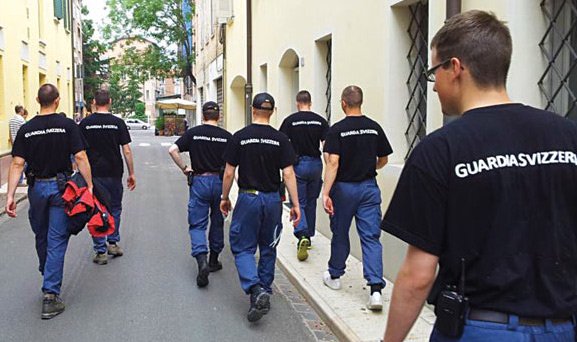













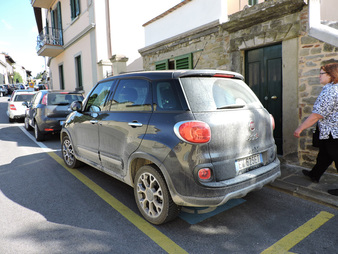
































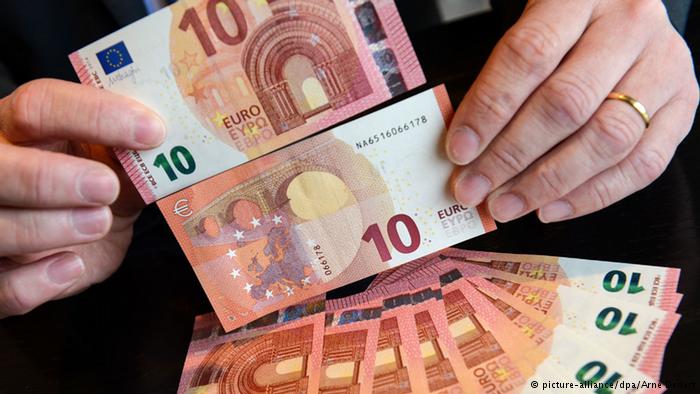













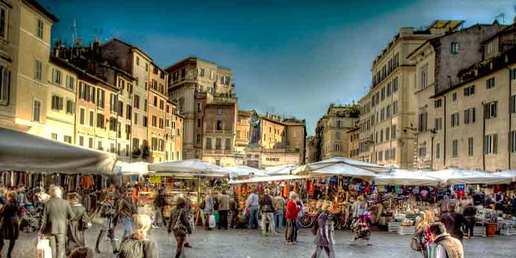


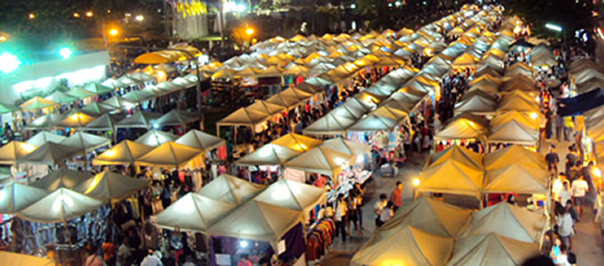









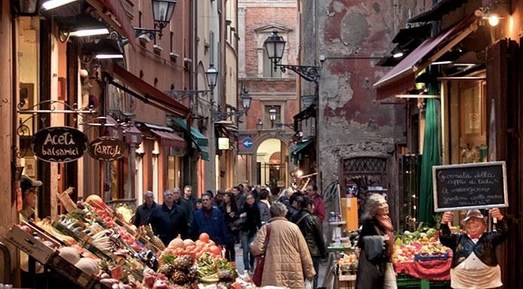





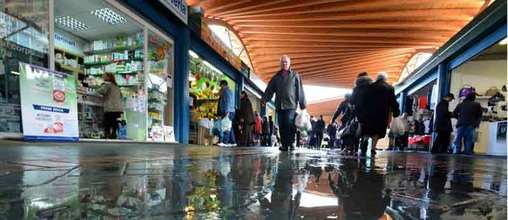





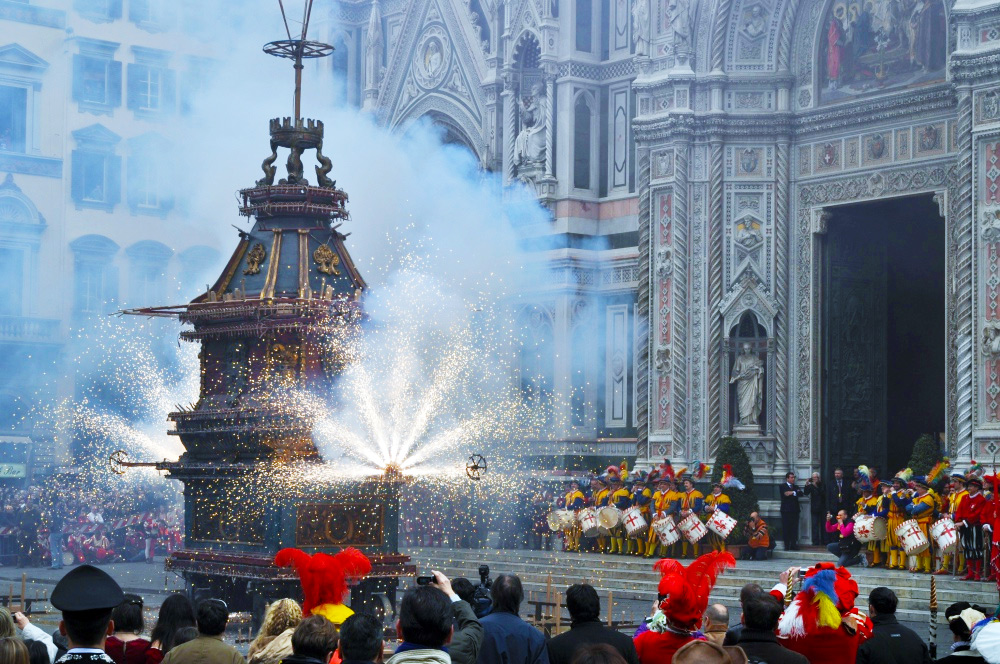




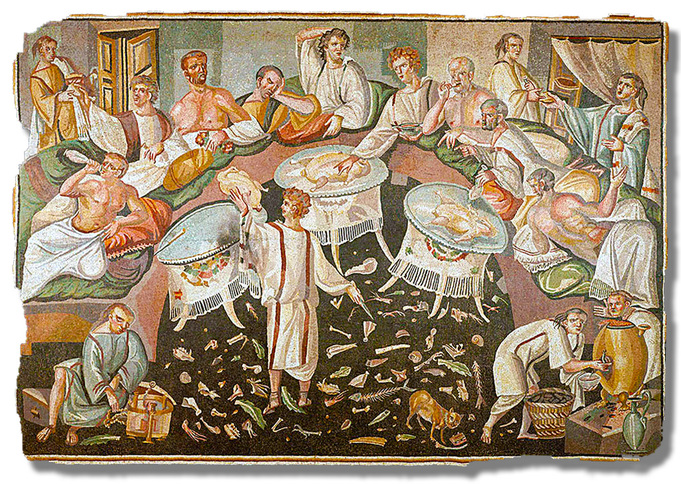
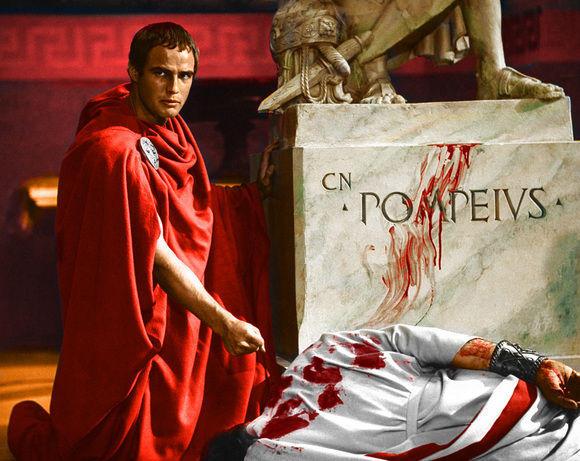

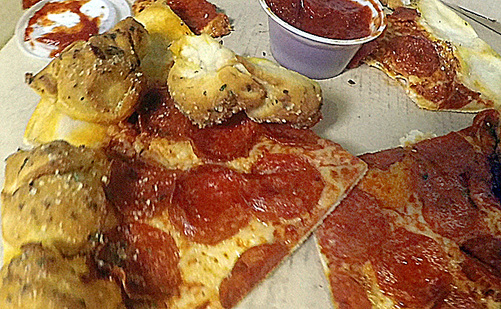
 RSS Feed
RSS Feed
